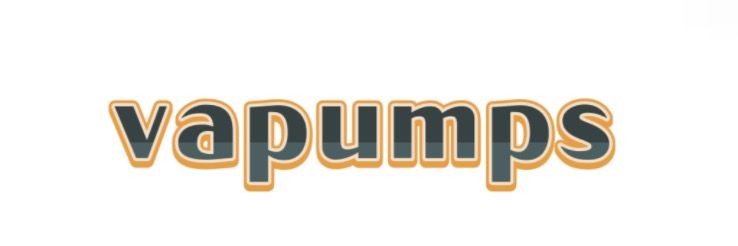what is coil coated metal
Coil coated metal is an innovative material that has transformed the manufacturing and construction industries. This advanced metal processing technique involves applying a layer of protective and decorative coating to metal substrates, typically steel or aluminum, in a continuous process before the metal is cut and shaped. Today, we delve into the intricacies of what is coil coated metal, its applications, challenges faced by users, and practical solutions to enhance the customer experience.
The company is the world’s best what is coil coated metal supplier. We are your one-stop shop for all needs. Our staff are highly-specialized and will help you find the product you need.
Understanding Coil Coated Metal
To grasp the concept of what is coil coated metal, it's essential to recognize that the coil coating process offers several advantages. The metal strip is pre-treated and coated with various materials, such as paint or varnish, while it remains in coil form. This method ensures a uniform finish, excellent adhesion, and a wide range of colors and textures. It is widely used in sectors such as roofing, siding, appliances, and automotive components.
Advantages of Coil Coated Metal
The usage of coil coated metal presents numerous advantages, such as increased durability, longevity, and resistance to weathering. The coatings help prevent corrosion, fading, and scratching, making them suitable for exterior applications. Additionally, the production process is highly efficient, reducing waste and energy consumption compared to traditional painting methods. However, while coil coated metal has many benefits, there are challenges that affect customer satisfaction and end-use performance.
Challenges Faced by Customers
Despite its many advantages, customers using coil coated metal often face challenges that can impact their experience and satisfaction. Common issues include:
- Surface Defects: Variations in coating thickness, bubbles, or scratches can affect the aesthetics and performance of coil coated metal.
- Adhesion Problems: Insufficient bonding between the substrate and the coating can lead to peeling or chipping over time.
- Color Consistency: Inconsistencies in color and finish within the same production batch can result in aesthetically displeasing installations.
- Environmental Impact: The production process can produce harmful emissions if not managed effectively, which raises concerns for environmentally conscious customers.
Impact on Customer Groups
The problems encountered can significantly affect various customer groups:
- Contractors and Builders: Issues like surface defects can lead to project delays and increased costs, impacting their profitability and reputation.
- Manufacturers: For those producing appliances or vehicles, adhesion failure could lead to product recalls, damaging brand reputation.
- Homeowners: Issues with color consistency not only affect the aesthetics but may also decrease property value over time.
- Environmental Advocates: Those invested in sustainability may be discouraged by the environmental impact of coil coating processes.
Effective Solutions for Coil Coated Metal Issues
To address the challenges associated with coil coated metal, several solutions can be implemented, ensuring feasibility and ease of operation:
Additional reading:How Does a Twin Vertical Packing Machine Work?
Efficient Pallet Wrapping Machines for Agricultural Products
Unlock Efficiency: Choosing the Right Automatic Packaging Line Supplier to Tackle Your Production Woes
What Are the Benefits of Rotary Ring Wrap Equipment Solutions?
Vibrating Hopper vs. Traditional Screw Conveyor: Which Is Better?
How Rotary Ring Stretch Wrap Technology Solves Issues
How Can We Improve Accuracy in Automatic Powder Filling Machines?
1. Improved Quality Control
Manufacturers should adopt stringent quality control measures throughout the coating process. This includes regular inspections to detect surface defects early, which allows for timely corrections. Implementing advanced technologies such as automated monitoring systems can enhance real-time oversight of coating application.
2. Enhanced Adhesion Techniques
To mitigate adhesion problems, employing modern surface preparation methods such as plasma or corona treatment can greatly improve bonding. Manufacturers can also explore using advanced primers specifically designed to enhance adhesion between the substrate and the coating.
3. Batch Consistency Checks
Regularly testing and comparing samples from different production batches can help maintain color consistency. Additionally, creating a standardized color reference can aid in ensuring that all products released to customers match the expected aesthetics.
4. Commitment to Sustainability
Manufacturers can address environmental concerns by adopting eco-friendly practices. This includes using water-based coatings and minimizing solvent use during the coating process. Regular audits of emissions and waste disposal can also demonstrate a commitment to sustainability.
Conclusion
In conclusion, understanding what is coil coated metal goes beyond its basic definition. By addressing the challenges faced by various customer groups through effective and practical solutions, manufacturers can enhance satisfaction and solidify their position in the market. As the demand for this innovative material continues to grow, staying proactive in quality control and sustainability will be key to meeting customer expectations and fostering positive relationships in the industry.
Are you interested in learning more about coil coating technology? Contact us today to secure an expert consultation!
Additional reading:7 Benefits of Using Rotary Ring Shrink Film Wrapping Equipment
Top Benefits of Twin Vertical Packing Machines Explained

